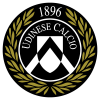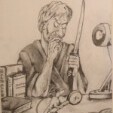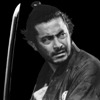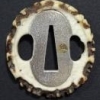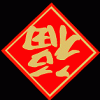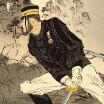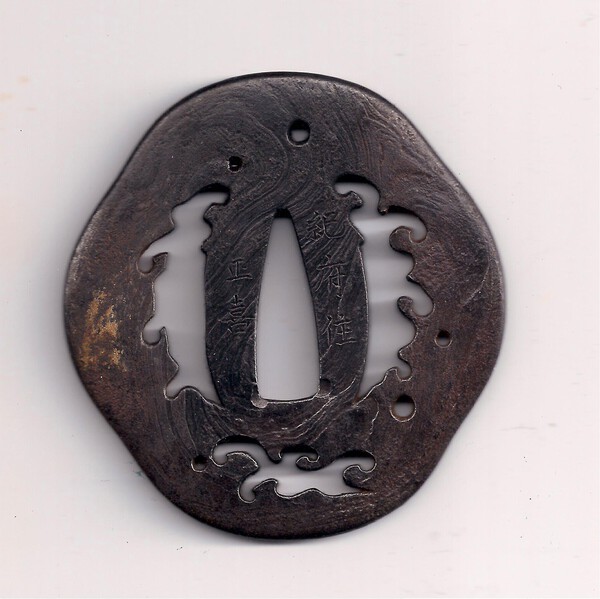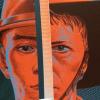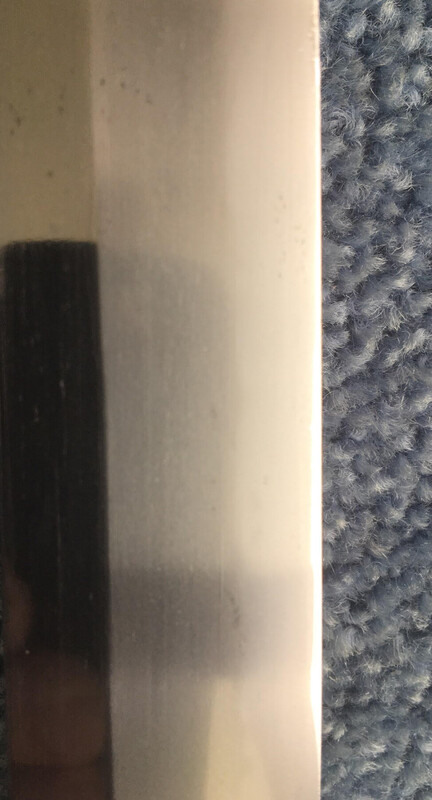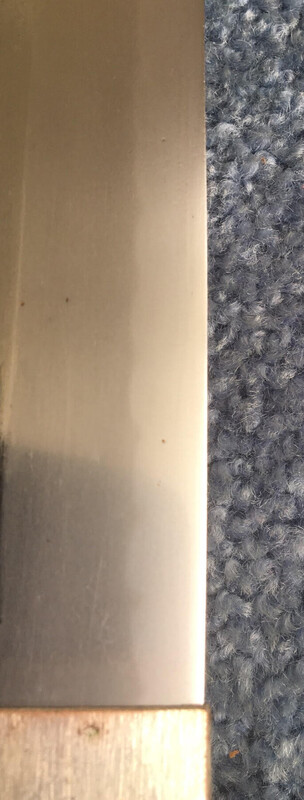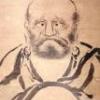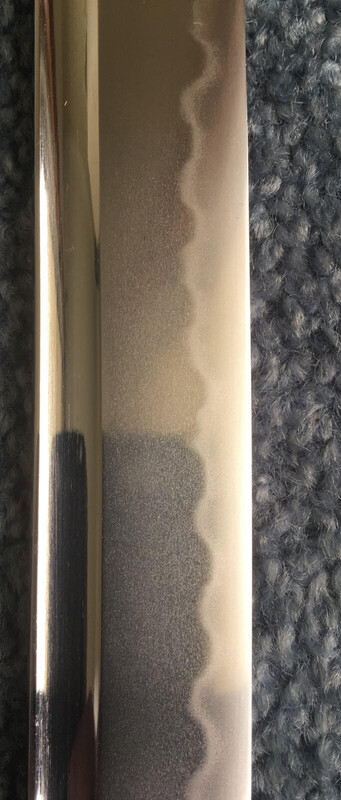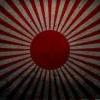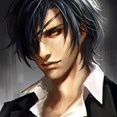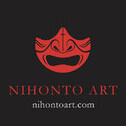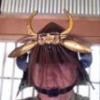Leaderboard
Popular Content
Showing content with the highest reputation on 02/09/2021 in all areas
-
4 points
-
3 points
-
3 points
-
I was a knight fan and grow up with old medieval movies with Errol Flynn and other Stars of the time. We had only a black and white TV in the 70's. And on weekends after the muppet show on saturday some 50s and 60s movie came on TV. My friends loved Winnetou but i was this knights guy and wished nothing more than a knight sword. As i was 10 my uncle gave me a rusty "knight" sword. It was one of these deco swords from the "Neckerman" catalogue. I was so happy. And i was sure this was a real one. The years gone by and with my first earned money after school i bought a saber from the french- german war. And so i came into the collectors hobby of blanc weapons. I lived in a small village with no antique shops and no public interest in antiques. So my interest was gone over the years. I sold all my stuff. And as ebay starts in the 90s i saw this beauty. and bought it not knowing what it is. I thought it must be very valuable with all that gold and silver. The blade was in bad condition but my experience from european swords was that this is patina and a sign of value and provenance. I really had no clue of Japanese weapons (ok nothing changed in that). But my love was awakened. And i start with the book " the samurai sword" my only book over a long time. I bought over the years many "gunto". All of this swords were mass produced. No star stamp, nothing important. I bought and sold the swords and collected Tsuba because i liked the motifs. But my knowledge didn't rise. In 2015 - i think i came to the NMB. This was a catalyst for me. For more interest and more knowledge in Japanese swords. So I'm a youngtimer in these hobby and i hope i get old to see and learn more. Btw i sold my first sword the kai gunto several years ago for a very less price. Sometimes i think i should had keep it. My last 50 cent on the story is, that today it is all more easy. You get in 5 minutes much more information than in the times before the internet. Now it is not important where you live and which friends you have. If you are interest in something you get the informations you need. Knowledge is so important in these hobby.3 points
-
Darcy's offerings are truly top-shelf. Thanks, Brian, for starting this thread. You're right, we do need to expose ourselves to high(est)-level items, whether in blades or tosogu, lest we begin to see the merely good as great, and the "merely" great as magnificent. In fittings, Darcy does favor the soft-metal side of things; however, he occasionally throws a bone to some of the early iron works. Fortunately for me. https://yuhindo.com/nobuie/3 points
-
2 points
-
Swords in worse condition have been brought back to life. I would say follow Dave's advice and get Mr. Hayashi to have a gander at it. Who knows? Its most likely not worth the effort, but let the togishi be the judge of that!2 points
-
David. Too me, your sword appears to be severely shortened (o-suriage), as the very end of the nakago-jiri (tang) looks to have a partial mekugi ana (hole for mekugi pin). If this is the case, then the blade was (crudely) shortened by several inches, and has suffered most every other form of abuse as well. Depending on where you are in California, I would advise getting the sword to Jimmy Hayashi in San Francisco to take a look, possibly open a window. Harunaka Hoshino and others in the bay area could also provide an assessment.( Harunaka has a somewhat spurious reputation, but knows Japanese swords well)! Mr. Hayashi would definitely be my first choice. Your sword from the photo's shown, does not look particularly promising, however, you never know, and the suggestion mentioned above would be the least expensive and most definite way to find out. The Koshirae , as mentioned is higher grade, present sword could be a lower end replacement for original, but then...many possibilities! Good luck, and let us know what you find out. Dave M.2 points
-
Hello, May I propose to you to look on the KINKO MEIKAN the TERUTOMO signatures, p379. From various discussions with experienced people, it seems that TERUTOMO was the main preparer of OMORI TERUHIDE in order to face the requests of clients. If so the quality should be above that which is figured on the pics. I own myself a FK from OMORI TERUTOMO which got TOK HOZ, and the work is totally different. The kao, to speak only of that, is different from KINKO MEIKAN ones. IMO it should be a copy. Best Marc2 points
-
IF it's real....and it's still 50/50...I would consider the blade as a tsunagi....something to hold together what are a nice set of mounts. But it is still a nice package, so look after it.2 points
-
Dear Dave. I think they have every right to be confident, its a blade made by their own smith, Kokaji. At least they can be sure that it isn't a Chinese copy. All the best.2 points
-
2 points
-
David, I would really help to get clear, close-ups of the blade tip, and maybe one or two clear close-ups of sections of the blade, with any attempt to see the temper line (hamon). Like the other guys say, this could be something really interesting or Chinese crap, nothing in between! Even if the blade turned out to be fakery, like John said, the fittings are special. Haven't seen that family mon (crest) before and I can't say I've ever seen a dust-cover seppa on a Type 98 before. Even so, it's rare. Like to see those close-ups!2 points
-
2 points
-
2 points
-
2 points
-
MAGNIFY https://www.touken-matsumoto.jp/swords_hires.php?prod_img=KA0360-hri.jpg BEST2 points
-
Mark, They are best regarded as a piece of art. What distinguishes good fittings from the ordinary is a combination of materials, composition and level of skill. Some of the finest metal workers to exist, not only in Japan but world wide were making the fittings for swords. Take a look at some of the examples here and on websites such as Darcy's and you can see the incredible skill employed in their manufacture. It is much like visiting a gallery of fine paintings.2 points
-
I was in my 30s working as an engineer. One of my hobbies was blacksmithing at the time and I was deep in the study of ferrous metallurgy at the time. One day a friend said he knew someone who was selling a Japanese sword and wondered if I was interested because of my interest in blacksmithing. It was just $10 so I told him I would take it. I was stunned the next day with what I saw in the metallurgy of this blade. It was obviously very old and made with enormous skill. It was all I could do to hide my excitement and close the deal. I spent the next six years studying this blade by buying books, going to a few sword shows, and enlisting the help of Paul Allman and Dean Hartley. The first collector I showed it to in Georgia told me nothing about it but managed to make an offer of $11,000. When he pulled it from the saya his voice was crackled and his hands started to tremble. That told me more than his words could have. When I was finally sure of what the sword was I decided to have it polished and submitted for shinsa. The first shinsa before polish was by Kotoken Kajihara at a show in Birmingham , Alabama. He attributed it to the first generation Moriie. The NBTHK shinsa after polish left it with Juyo papers and an attribution to the Ichimonji school of the early to mid kamakura period. I still have the tachi and I have been hooked on Nihonto ever since. It’s hard to build a big collection after starting out so well. The blades I like are too expensive so I have spent more on books. I will leave a few nice polished blades and a lot of books when I’m gone for the next generation.2 points
-
1 point
-
Hello all, Out of shear curiosity only, I bought a mumei Wak from Kumonjo off ebay, for a whooping sum of $168 bucks. Total rust bucket, no habaki, junk saya, no tsuka. Anyway, clean it up a bit and low and behold it is a folded steel blade, straight hamon, punched ana [not drilled], no real flaws to speak of sans the rust of course. Uneducated guess by the shape & patina on the nakago, 1800's, certainly not any older for sure. Not at all worth putting another dime into it, or even taking pictures of it.......but it appears by all accounts to be a real Japanese blade, most likely mass produced, probably for conscript military use?? Anyway, thought I'd throw it out there for you folks. Mark1 point
-
I still believe it’s real but badly damaged. Boshi was massacred, so was nakago. What we’re seeing as a nakago here is actually part of the blade. Poor thing was butchered.1 point
-
I'm also dubious about the blade. Not the fittings. But that nakago is horrible. Even the shape. can we get a closer pic of the tip? Looks very angled.1 point
-
You never fail to find great stuff to share Pete. Thank you once again. I wonder how many members have blades polished by Mr Bowhay or have stories to share about there experience with him.1 point
-
Yas I would not sell my example for anything. 7,000 is a cheap price for such a long time tradition. Thank you so much for the extra information. The workers are very skilled. I don't know if the paperweights are still being made? Or what years they were produced? I see a lot of these “Compliments of NYK Line” souvenir of a cruise line circa 1920’s for the Nippon Yusen Kaisha Line. They were given away as advertising at the time - a hundred years old now. They are better made than the cast 100 yen piece.1 point
-
Dale. The paperweight box says Seikodo. Seikodo is famous as a specialized workshop for making kettles for "Sadou". "Since Edo period, now it's the 10th, the atelier which specializes in making 茶の湯釜 Iron Tea Pot and 鉄瓶 Iron Kettle. In order to keeping excellent quality, even now, all works are handmade and the works are supported by only a few workers." http://www.seiko-do.com/about.php?lang=en That's why the paperweight is worth it and is being put up for auction online for 7,000 yen. Luxury goods! The paperweight I presented the image on starts at 100 yen.1 point
-
Hi David Yes, an authentic Type 98 Shin Gunto, the blade is an old one in pretty rough condition and the Nakago (tang) has been altered quite crudely. I suspect this may have been originally mounted in Kyu Gunto mountings which preceded the Type 94/98. This appears to be a mount of good quality, I can see a family crest on the Kabutogane (end of handle) and what appears to be a rare dust seal Seppa that provides extra protection to the Saya (sheath). If you could get some more photos of this it would be appreciated as they are fairly rare.1 point
-
Yas - it is a real wonder that a lot of 'no longer useful' metal objects survived those times - the world losses more than lives in all conflicts. It is a great pity that we can't seem to lose conflict. Ten more years and that paperweight will be an antique, but it already has much to tell. I have a small database of tsuba shaped paperweights, they are an interesting subject in their own right - if they are not trying to be fakes. Here is something unusual in a bad way https://www.jauce.com/auction/m475525520 Izarae (Lit. to clear/clean a cast piece) gone too far! [hardly an "Excellent Product"] Looks like it was worked on by an angle grinder! Back to paperweights I have one of these that I note turn up every now and again https://www.jauce.com/auction/371174105 Even though clearly a paperweight copy of an early Christian guard, I do enjoy having mine, as it too has a history behind it.1 point
-
1 point
-
1 point
-
1 point
-
1 point
-
Hi Luis, The tang has a bit of a Sengo look to it, but it doesn’t look quite right and might have been modified to make the blade more attractive. Daikokuten would be ato hori if nambokucho. He became popular with samurai in the muromachi period. I think that’s him but it’s quite worn down. I didn’t realise that Hosho tanto had a distinctive sugata. Is it pure masame hada? If not, I’d say you can discount that as an option. Sorry Luis but the condition makes it hard to say more. I’d date it as koto but not earlier than muromachi but I’m guessing.1 point
-
I thought you all might be interested. I have exchanged a couple of emails with Mr. Yashida and his staff. The staff has been most interested in my email tag line. "Suppose you were an idiot and suppose you were a member of congress. But I repeat myself" - Mark Twain. It has been most amusing trying to explain this quote. At one point they said "He wrote Tom Sawyer. Your name is Tom." I explained that I am not nearly as interesting as Tom Sawyer. I receive the following email from the staff last night and I must admit I am excited. I am thrilled to have the gun in what appears to be the Museums newsletter. I can't imagine contributing anything except the dummy who pushed the ball off the clip. Below is email from the staff of the museum. If this happens I will post the newsletter. Attach a picture of the Newsletter they sent me. Oh and I said ok. You can type ok really fast. Tom Dear Mr.Wines Thank you for your email. A week has passed since we received your last mail. Mr. Yoshida has been very busy both in his work and his private life. He is going to reply after completing some work whose deadline is nearing. So please wait for a while. I have something that Mr. Yoshida asked me to do. He publishes 国友地域学Kunitomo-chiikigaku(Study of the area Kunitomo) every month. He writes articles about persons and things related to Kunitomo. He sometimes asks the persons, who are interested in matchlocks or the history of that era, to write in the paper. I attach its photo. He would like to write about you and the matchlock you have in the paper(国友地域学). Mr. Yoshida wants me to ask you whether you allow him to write about you. If you say "OK", he will be very pleased. From Mr. Yoshida's assistant1 point
-
Renowned for their cutting ability, (Mori) YOSHICHIKA, was selected to make swords for the Japanese Imperial Guard. Some of his blades even have cutting tests engraved, where they were tested on pigs, (dead ones I hope!). From my research, there were father and son, (Shodai and Nidai) YOSHICKICKA. This blade was found in very old 'D' Guard mounts, so it is Shodai. There is however no date, no stamps. He resided in Tokyo, and made swords in the Taisho and Showa periods. Rated as a 1.5 million Yen smith, he is regarded as a high-grade Gendaito. This example exhibits mokume hada, gunome-midare hamon?, and habuchi. I would appreciate seeing other other examples of YOSICHICKA work and mei for my research.1 point
-
There are absolutely 'jeep spring swords' (that is the term that I hear more frequently used) made by diggers to be sold to US servicemen and there is no doubt that these are mixed into collections and estates as genuine wartime swords (which they are in a sense). The diggers also used to make and sell flags to the US servicemen. There was demand and they created a supply. I agree that it is near impossible to pick these out too. I use the term 'island swords' as a catch all for the many weird and wonderful variants, whether collaborator swords, prison camp manufactured swords, the spring swords Dave mentioned a sword repair team creating, indigenous copies, souvenirs, digger made swords.... it's just a catch all term, pretty broad. Most of these swords are one of a kind, but there are a few repeated patterns. My only requirement to call these an island sword is that there has to be appropriate age/patina to not be dismissed as a recent fake. I make no claim to which swords fit into which category. I think the only ones that are really all that possible to define are the ones inscribed with the Javanese 'mei', since there are historical accounts of the steel works on the island producing swords. All others are a guess. I have no doubt that some of the swords described by Snowy and the diggers are included in this mix. Conversely, I was sent a 'Japanese' sword and an officers map satchel with a full history of it's finding by the Australian veteran. No financial interest, sword was only sent to get more information. I don't disbelieve the story. It's not glorified and there was no financial interest. It was left behind in a Japanese complex and found by the Aussie. It's another island sword, cruder than Japanese make but looks a bit like one. While I can't say for sure, I like to believe that the story was genuine and see no reason why it wouldn't be. So I don't discount that there are at least some swords that may have an origin other than the souvenir swords made by diggers. How to pick which is which, well I think that's about impossible. Fun to speculate though, as long as everyone recognises it is only speculation.1 point
-
Punctuation is not their strong point. They mean Japanese bedroom interior has lamp, katana sword, and pillow. The 3 unrelated.1 point
-
I feel like I had always known about Japan, which is odd for a kid from Wisconsin. I grew up with my Grandparents living in a Wisconsin town that was also home to a Kikkoman factory. Japanese companies, as they do, keep as much as possible in house. All management and executives were Japanese with the factory workers being a make up of mostly local Wisconsinites. Due to this Japanese families were provided homes in the area to live during their usually 3 to 5 year stints at this factory. Furthermore my grandfather had been stationed on the U.S.S Intrepid during WW2 and due to this experience and his desire to move on/heal from the war he took a trip to Japan. He went as a tourist along with his wife (my grandmother) with an open mind and heart. He absolutely loved his time there and brought back statues of Samurai, geisha, a couple paintings and random bits and bobs decorating the house. This brings me to my childhood among the statues, bits and bobs and the Japanese families in the neighborhood. I met two brothers from Japan whom I became close friends with spending summers playing together. I sampled some of their mothers cooking, saw their cooler than ours transforming robot toys and his father's small collection of Japanese Swords he had purchased here in America. I noticed them...thought about them...then moved on, but it had parked in the back of my young brain. I grew older and discovered I could study abroad. Japan it was, my University just happened to have a partnership with JoChi University in Tokyo, where I ended up transferring and then graduating. I lived in Tokyo for 7 and a half years during which I visited their museums, went into a few antique and sword shops just browsing. Still never had a desire to own a katana of my own but I was soaking up the experiences as I went along. I moved back to America and another 7 and a half years later, without a single thought of katanas, I saw a WW2 parade sword at an antique mall. In that single instant an unavoidable desire burst forth in me to own an authentic antique Japanese sword. One would be mine. I have a powerful collector's gene. I scoured ebay, did some research and then found a seller with a bunch of swords in a nearby city. I contacted him and the next day I was at his War Relics shop. He brought out perhaps 6 or 7 swords and gave me a run down of why they were all in the 2 to 3k range and my hope balloon was slashed by the pricey blades. He then says, "You know what, there's one in back I was going to sell on ebay. Might be perfect for you." He brought out an early type 98 with 27" nagasa, punched tsuba, cat scratch habaki, shinto mumei with some rust on the top portion of the blade. Besides that bit-o-rust it was beautiful. I could feel the history, it smelled of age and had a whisper of old necessity now outdated. It felt important but stoic in its relegation to an artifact. A noble acceptance recognized in age of one well lived who knows its time has passed. Made me want to love it even more. He gave me a good price and I paid in cash to avoid paying tax. Told myself, "I only need to own one". That was a lie. I still though think to how that first sword made me feel. My childhood friends, my grandfather...all the people I met in the US and Tokyo. This sword was important, this sword meant something and still is and does. Just in a different way. War, battle, old ways...each sword belonged to a someone. One sword for one human. Held with intent and by someone who didn't want to lose it; lose their ability to fight, to live. This was important. This meant something. Now it means something to me. I want to learn more.1 point
-
As a kid I started collecting WWII stuff; family medals, bayonets and so forth. A low point was a collection of lumps of concrete I managed to get off the pill boxes that lined the coast here in Cornwall. (Even lower was the live cannon round I found on the beach art Arromanche but that is another story). A local antique dealer, Peter Watts, used to let me look around his shop and every once in a while I would have enough pocket money to buy a bayonet or something. Fascinated by antique guns, one day in Peter's shop I saw a wheel lock rifle, sans lock and went home raving about it, way out of my price range. My Mum went down and bought it for me for Christmas but not wanting me to find it asked Peter to hang onto it. A day later the police turned up and told him that a local collector had been robbed and the gun was part of the haul, of course he returned it and when my Mum went in to collect it told her the tale and said, "Why don't you have this instead, you can have it fir the deposit you payed on the gun." It turned out to be a katana, damaged in combat and remounted as a Burmese dha. I was fourteen at the time and there was nothing available in terms of books, the best computer was literally hand cranked and so one or two general books on sword collecting until at college I came across Stone's Glossary and the reprint of Sword and Same, did a written study on The Japanese Sword, including building a small tatara in the garden and forging some metal.. It got me my degree and I started work as a teacher in another town. Cycling past an antique shop I saw a katana in the window and had to stop for a look. Stunning! Big katana in good mounts. Pulled the blade out a little and the sticker on the blade said £30. Automatic reaction I asked what they could do on it and it came down to £28. It is still the only time I have ever gone overdrawn but I bought it and cycled home with it. I still have both swords. All the best.1 point
-
Time is money, as they say...... Time (money) invested in researching, designing, procuring materials, building, fitting, etc.... Once you calculate all of that, you realise that you are better off buying one. Mostly, they are not expensive :https://www.accessdisplays.co.uk/cat/glass-display-showcases/wall-mounted/ Of course, they could become high-end too: https://en.katana-case-shi.com/product-page/刀展示ケース-漆-urushi-の複製1 point
-
This is delving into dangerous territory, in my opinion if you wish to pursue something like sword polishing you do it one way: apprenticeship in Japan under a recognized master. Why this keeps getting brought up, questioned or challenged puzzles me.1 point
-
Jean, at the risk of beating a dead horse... I agree with you. What I'm saying is, what should prevent amateurs like me from practicing and getting better and better at what my polish, so that one day, I can also become a "professional" and set up a website and charge people money to send me their blades? What is the difference between that, and other "professionals" who also surely practiced their way to better their knowledge and skills? If those other people get a pass, maybe people like me should, too. Maybe I'll just go meet some polishers and attend a seminar or workshop or demonstration, and then exaggerate to say that I was "trained by" those polishers to give myself a boost. Do you see the problem? I'm sorry if this seems argumentative. If so, that is not my intention.1 point
-
Jean, I think you may have somewhat missed my point. Sorry, I should have been more clear. In the journey to get to "professional" from "amateur," one must practice. And one must necessarily practice with precious stones and even more precious nihonto. In being trained by a Japanese master through years of careful mentorship and apprenticeship, I would imagine that there are fewer irrevocable mistakes made to what are technically irreplaceable (whether juyo token or rusted mumei) historical artifacts. In a way, I was echoing Barry's concern that self-taught or even "half-taught" amateurs will damage better and better blades over time.1 point
-
1 point
-
1 point
-
Greetings from Montreal Canada, most of you know me here from posting over the years and for those of you who don't here it goes; Welcome to Nihonto Art. Although we live for all aspects of the art of the Samurai, the word Nihonto itself means "Japanese sword" (as you all know by now), which is our specialty. Founder Nick Ricupero has fostered this lifelong passion as both a collector and dealer. His high regard for such a timeless art means that each piece is hand picked and carefully selected. We make an effort to search out the most interesting and unique items we can find and as a result have a very diverse inventory spanning the past eight centuries. He uses his personal taste as a means to choose items and all of our artifacts are directly sourced from Japan. Come and check in with us from time to time to see what antique Japanese swords for sale have been recently added, if there is a particular item that you would like to acquire and does not appear on Nihonto Art please let us know and we will seek it out for you. "I truly believe I have the best job in the world, connecting collectors with these pieces brings me great joy and to be a part of finding a caring home for each item we sell is extremely fulfilling." Thank you in advance to all who take the time to check me out. Warmest regards, Nick Ricupero www.nihontoart.com www.nihontoart.ca www.facebook.com/nihonto.art/.1 point
-
You are going to have to dumb this down. Are the za surrounds what I am calling the chrysanthemum on the stock that seats the barrel retaining pins. I am in touch with Mr. Yoshida and don't want to make a fool of myself. I can speak the language of Civil War guns and WWII guns but I am woefully ignorant of matchlocks so please treat me like a kindergarten student. Do the "nails" belong where I see the three modern screw heads in the lock. I am asking Mr. Yoshida to find me parts from his restoration people. He has agreed to help. I think he is asking me for measurements on the za or what I am calling the chrysanthemum. My gun smith and I are discussing replacement "nails" for the three screws in the lock. I thought I sent Mr. Yoshida photo album but I may have just sent the kanji pictures. I will correct that error. Below is his latest response. In it you will note the name of the maker is different that the original maker named. Ikkansai is the first maker he named and Kunitomo Tobei is the second maker he named I think they are the same person but I am totally confused. I appreciate your help. Tom Dear Mr. Wines, > > > Happy New Year ! > > > I'm sorry for my response being late because of Year-end and New > Year holidays. > > I'd like to answer your questions. > > > First: about the name inscribed on the gun, 江州 藤兵衛・充俶. > > 江州(Goshu) is now 滋賀(Shiga Prefecture). > > 國友藤兵衛(Kunitomo Tobei) was born in 1778, and died in 1840. > > He was a gunsmith in Kunitomo and also a representative scientist > in those days of Japan. > > 充俶(Jushuku) was Tobei's eldest son. It has not been investigated > when 充俶(Jushuku) was born > > and died. But we know 藤兵衛(Tobei) got married in 1813 and died in > 1840. > > After his death, 充俶(Jushuku) succeeded to the name of > 藤兵衛(Tobei). > > What can be inferred from that is that the gun was made between > 1840 and 1860. > > > Second: 4 pictures you sent me. > > In every picture, the inscription part was enlarged. As I can't > see the hammer part, the inlays > > and the full picture of the gun, I can't make a comprehensive > decision on the gun. > > The overall length of the gun, the length of the gun barrel and > the size of the caliber are needed > > to make it. > > With such information, I think I can make more detailed comments. > > > Third: In your mail, it was written that the ramrod is 2 inches > short. > > It can't be 2 inches. It must be longer than the gun barrel. To > push gunpowder and gun ball > > into the barrel, hard wooden stick was usually used. So it is > unlikely that it was remade with > > modern threads. > > > Fourth: about the use of the gun > > The aim (gun-sight) on the end of the barrel can distinguish > military from personal. > > If you tell me the size of the chrysanthemum pin, I may be able > to find a proper one. > > > I will send you the material by another mail. > > > For more information about Kunitomo guns, please visit our website. > > > I wish you good health and success. > > > Kunitomo Gun Museum > > Director Ichiro Yoshida1 point
-
The official family shrine of the Ikeda Daimyō, Kibitsu Hiko Jinja 18 October 2020, our sole live firing this year. No public. Only large guns, 10 Monmé and above, not a full demonstration. A dedication to the gods.1 point
-
I was referring to shodai Yasutsugu as he did utsushi to tribute Sadamune. But the patina on the nakago looks shinshinto.1 point
-
1 point
This leaderboard is set to Johannesburg/GMT+02:00


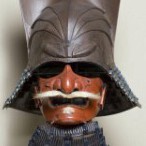
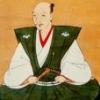
.thumb.jpg.5fe7c840a4a359e77a35d40018175da4.jpg)
.thumb.jpg.b999679b172cb7de9996e40668c87c1c.jpg)
.thumb.jpg.7e46db34217998bf43dedf1dd427e7ee.jpg)
.thumb.jpg.e284839774c27d1ddead43aadd73607f.jpg)
.jpg.468a25c0e051ed1d787a2a964b3721db.jpg)
.jpg.5299025f0813a02b614b5d5545929368.jpg)
.thumb.jpg.b65d9bac2a1fb62afd1407acb3acb165.jpg)
.thumb.jpg.c5ed1a38378322f524151b7ac3e887b4.jpg)
.jpg.936128ba2a2cf84dc378c7068b95f010.jpg)
.jpg.95ed6e03f3c3bcba9dddafc1487f90f1.jpg)
.jpg.0f2796ac9f157dc020980230f96b3b7c.jpg)
(2).thumb.jpg.3624b73a49cef8b99c5d11d671590a14.jpg)
.thumb.jpg.dc1452e8ce01c4d8e72409ad6e3d6582.jpg)
.thumb.jpg.c9eebf5f05ec65b24c54c27a5092d938.jpg)
.thumb.jpg.5c54c4fb9f72f770bf05e77035cbe8bc.jpg)
.thumb.jpg.714e438b78c186ad394f88022c41645d.jpg)
.thumb.jpg.00f40686022eb91214fdb6d9cd51b067.jpg)
.thumb.jpg.05bd100bdd9da92afa3fff457fbc66bc.jpg)
.thumb.jpg.b45f384866acd9e4143309a18ae0be2c.jpg)
.thumb.jpg.0f3ca178abac250c70148e5e9544ecb1.jpg)
.thumb.jpg.471cf2ada46e9abe4bd838e260c09755.jpg)
.thumb.jpg.72a601049b23618a37099111efdcd900.jpg)
.thumb.jpg.57fe0bd92d7ecb72616105f452fecdb8.jpg)
.jpg.991ef3283e97b375c12ace46fc9eef98.jpg)
.jpg.f628436e9131724add9c83bec318bb7b.jpg)
.jpg.83ba17165037663bfb84ec880726c2ca.jpg)
.thumb.jpg.921a9565894783b62eb1cdc9b41c339d.jpg)
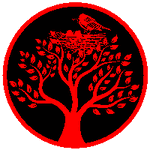






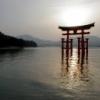


.thumb.jpg.fd1a69d2b3de795a4dbe654b1a5896d2.jpg)
.thumb.jpg.d06093a848928f2c725f8ed47e207bc2.jpg)
.thumb.jpg.c38884bbd8b1f56c5756dddeba4709fd.jpg)
.thumb.jpg.9dd99d2586ddef0df089886e5b653536.jpg)
.thumb.jpg.6c16ef7b4d986ae322506c4a01781ef4.jpg)
.thumb.jpg.0214c4ed59e8ab8029be7559b25eee99.jpg)
.thumb.jpg.67760dcfe75ccbe8ce8b70788a250f2f.jpg)
.thumb.jpg.35f3e30d3d0a928e89c4040666005efb.jpg)
.thumb.jpg.ccd74ec60358b11fad99c2183e122612.jpg)
.thumb.jpg.3609b8dd7ed6d19466044ff76683b7a5.jpg)
.thumb.jpg.5269761504ce7804a3f749f079a5ec48.jpg)
.thumb.jpg.3e20c7b60a0bed3e1d0237a4421eb560.jpg)
.thumb.jpg.5d1472f19814537c10f6959e452075a4.jpg)
.thumb.jpg.5ef9726ff9963f8565f0c728ad3acebf.jpg)
.thumb.jpg.13b91a63d9c7675db296a5dcaec83720.jpg)




